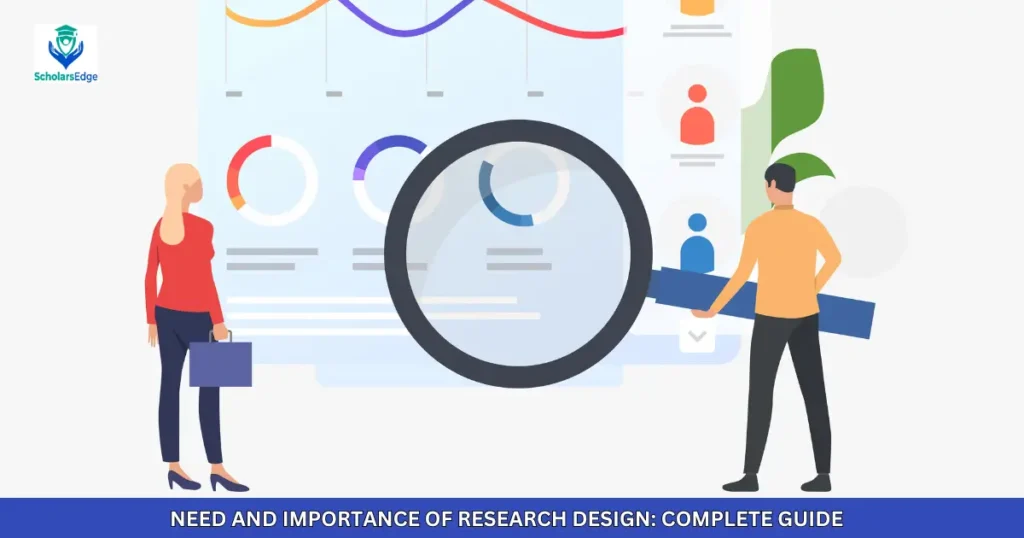
Have you ever started a job without a plan? This is also true for research. A good research plan is like a blueprint; it tells you what to look into and ensures you get the correct information to answer your most important questions. This in-depth guide explores the need and importance of research design and how it can help you be more precise, reduce bias, and come to solid and insightful conclusions.
What is research design?
A research design is a plan for how you will use actual data to answer your research question. Choosing your general research goals and approach, whether you’ll use primary or secondary research, and your sampling methods or criteria for choosing subjects are all part of creating a research design.
Types of Research Designs
To choose which model to use for a study, a researcher must understand the different types. You can put your analysis plan into two main groups: quantitative and qualitative. This is also true for the research itself.
- Qualitative research: It focuses on understanding concepts, thoughts, or experiences through the collection and analysis of non-numerical data, such as interviews, observations, and textual analysis. Qualitative research methods help researchers figure out “why” a theory emerges and “what” people have to say about it. Its analysis involves identifying patterns, themes, and categories within the data.
- Quantitative research: Quantitative study is used when it’s essential to get actionable insights from statistical conclusions. When making important business choices, numbers give you a better picture. Any organization that wants to grow needs to use quantitative study methods. When making choices about the future of the business, insights gained from complex numerical data and analysis work very well.
Importance of research design
The following are essential parts of a good study design:
- The researcher can make better choices at every stage of the study if they have a research plan.
- It helps to determine the study’s big and small jobs.
- By giving small information at each step of the research process makes the study useful and exciting.
- The plan for the tests (research design) makes it easy for the researcher to set the goals of the work.
- A good research design makes it easier to find the best answer to the research problems and helps the researcher meet the study’s goals on time.
- The researcher can do all of their work better, even if they don’t have a lot of tools.
- The best thing about a good research design is that it makes the study correct, dependable, consistent, and valid.
Need for research design
- Reduces mistakes: A well-structured rsearch design describes data collection and analysis. This reduces errors and inconsistency, yielding more accurate and reliable outcomes.
- Improves reliability and efficiency: Research design gives researchers a roadmap to maximise their time and resources. It ensures they collect the most useful information utilising the proper approaches for reliable findings.
- Eliminates bias and errors: A good study design uses control groups or randomization to avoid bias. This prevents outside factors from skewing results and shows how variables relate.
- Reduces time waste: Planning and designing a study ahead of time saves researchers time and energy on unnecessary activities and techniques. This simplifies studies and boosts productivity.
- This helps test the hypothesis: The research design guides hypothesis testing procedures and data analysis tools. It ensures that the study question, data collection, and analysis make sense, leading to usable results.
- Directs research: A well-planned research design directs the entire investigation. It covers everything from creating the research question to assessing and interpreting the outcomes. This precise plan guides researchers through their investigation.
Research design components
Reliability
When study design is done right, the results can be the same every time. But you can only get similar results if the way you do your study is sound.
Here are some of the elements of a good research design:
- Purpose statement
- Data collection methods
- Techniques of data analysis
- Types of research methodologies
- Challenges of the research
- Prerequisites required for study
- Duration of the research study
- Measurement of analysis
Sample example of research design
- Design for correlational research: Look at how two or more factors are related to find out how they are related. This style doesn’t show that one thing led to another.
- Design for exploratory research: focuses on getting ideas and information so that further research can be done. This strategy is used when there are not many or any previous studies.
- Research method with explanation: focuses on thoroughly explaining the study’s parts. This design is in charge of setting up links between causes and effects.
- Design for causal research: Keep an eye on how the independent variable changes the dependent variable. One might monitor how an independent variable, like price, affects a dependent variable, like how happy or loyal a customer is with a brand.
- Design for an experimental study: A scientist takes samples of plants and randomly puts half of them in the sun to photosynthesise and the other half in a dark box to keep them from getting sunlight.
Follow these suggestions to write an excellent research design:
- Put together an outline of the plan.
- Think about the restrictions.
- Figure out the best way to do the study.
- Pick the demographics of the group.
- Pick a way to gather information.
- Talk about all the parts of the method.
Conclusion
A well-thought-out research plan is the most important part of any research project. It gives researchers a plan for how to collect data, analyze it, and finally come to true and trustworthy conclusions. Researchers can make sure that the importance of research design is reflected in the quality and trustworthiness of their results by giving careful thought to research questions, methods, and possible biases. In the end, this helps people understand the subject better and makes a big difference in many fields of study.
FAQs
What is the significance of research design?
The main goal of the research plan is to make sure that the researcher stays on track and does not get off track. It is important to study experiments because a bad research plan can waste time, money, and people who are working on the project.
What are the 5 purposes of research design?
The five purposes of research design are – Answer the research question, Control extraneous factors, Ensure data quality, Promote efficient resource use and Allow for clear communication.
What are the essential concepts of research design?
To sum up, research design must include (a) a clear statement of the research problem, (b) the group to be studied, (c) the methods to be used for collecting and analysing data, and (d) the steps and techniques to be used for gathering information.
